Select Language
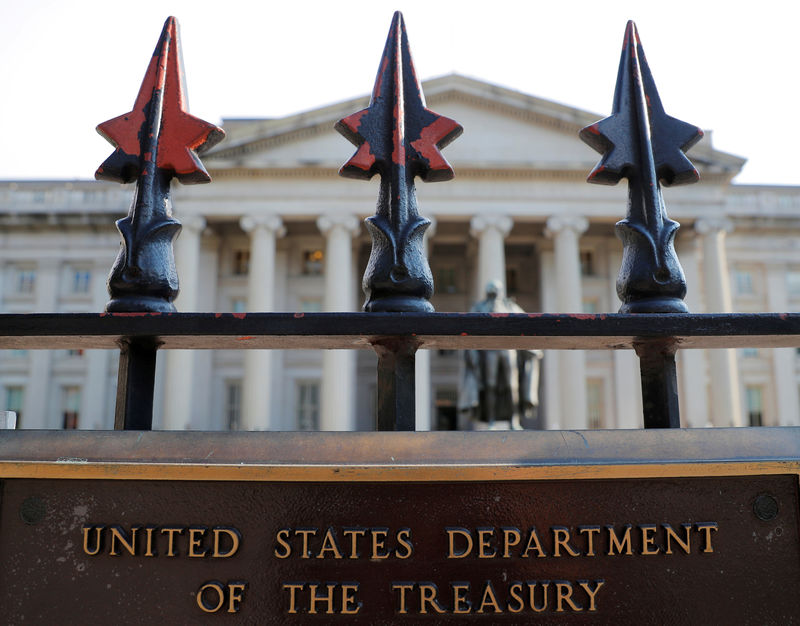
Recent speculation that China and Japan were dumping U.S. Treasuries took a hit on Wednesday after a report from the U.S Treasury Department showed that foreign holdings of Treasuries actually rose 3.4% in February.
Both China and Japan increased their holdings in the month.
Japan remained the largest holder and increased its holdings by 4% to $1.1259 trillion. China raised its holdings by 3% to $784.3 billion. China remained the second-largest foreign holder.
In all, foreign holdings of U.S. treasuries stood at $8.8172 trillion at the end of February.
Rumors that China or Japan was dumping treasuries kicked into high gear in April, after President Trump’s larger-than-expected reciprocal tariffs were enacted, so they could still prove true. However, today’s new data shows that both countries were increasing their U.S. debt exposure going into the tariffs.
China has retaliated against the U.S. reciprocal tariffs, while Japan has not.
The U.S has a 125% reciprocal tariff on China in addition to the 20% tariff to address the fentanyl crisis. If you included section 301 tariffs on specific goods from China, tariffs reach as high as 245% on imports from the country.
Japan currently faces a 24% reciprocal tariff from the U.S. and will be one of the first countries with which the Trump administration will engage in trade talks.
Trump revealed that Japan is coming today to negotiate tariffs, and the President will attend the meeting.
“Japan is coming in today to negotiate Tariffs, the cost of military support, and “TRADE FAIRNESS.” I will attend the meeting, along with Treasury & Commerce Secretaries,” Trump said on Truth Social. “Hopefully something can be worked out which is good (GREAT!) for Japan and the USA!”
The data could indicate that the Asian countries want to show goodwill toward the U.S. and President Trump ahead of potential tariff negotiations by raising their treasury holdings rather than decreasing them.
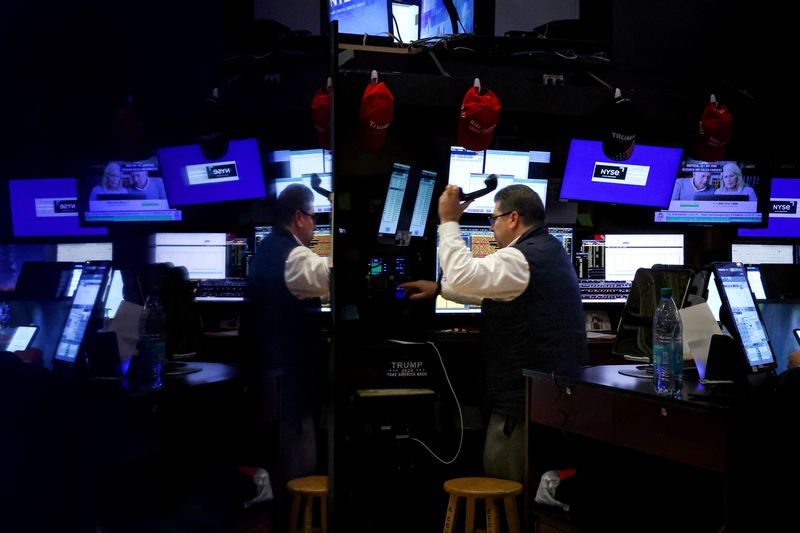
By Caroline Valetkevitch
NEW YORK (Reuters) -U.S. stocks ended sharply lower on Wednesday as Nvidia (NASDAQ:NVDA) warned about steep charges from new U.S. curbs on its chip exports to China and Federal Reserve Chair Jerome Powell said U.S. economic growth appears to be slowing.
Powell, in remarks for the Economic Club of Chicago, said larger-than-expected tariffs likely mean higher inflation and slower growth. But he said the Fed would wait for more data on the economy’s direction before making any changes to interest rates.
The Fed chair’s afternoon comments sparked further selling in stocks, which had already been under pressure from a sharp drop in shares of Nvidia and other chipmakers.
"Powell is confirming what investors have been worried about, and that is the likelihood of slowing economic growth and more stubborn inflation as a result of the tariffs," said Sam Stovall, chief investment strategist at CFRA Research.
Nvidia said late on Tuesday it would take $5.5 billion in charges after the U.S. government limited exports of its H20 artificial-intelligence chip to China, a key market for one of its most popular chips.
It was among the latest developments in the U.S.-China trade fight. China raised its tariffs on imports of U.S. goods to 125% on Friday in a retaliatory move after U.S. President Donald Trump effectively raised U.S. tariffs on Chinese goods to 145%.
"The markets and investors want certainty and of this much I am certain: this year will be a more difficult year for investors than the last two cake walks," said Gina Bolvin, president of Bolvin Wealth Management Group in Boston.
The Dow Jones Industrial Average fell 699.57 points, or 1.73%, to 39,669.39, the S&P 500 lost 120.93 points, or 2.24%, to 5,275.70 and the Nasdaq Composite lost 516.01 points, or 3.07%, to 16,307.16.
The Nasdaq had fallen as low as 16,066.46 during the session.
At the same time, Wall Street’s fear gauge, the Cboe Volatility index, rose, ending the day at 32.64.
Nvidia shares fell 6.9% on the day, while an index of semiconductor stocks dropped 4.1%. The new U.S. curbs also affected AMD (NASDAQ:AMD), whose shares fell 7.3%.
Also on Wednesday, Dutch chip-making tools giant ASML (AS:ASML) warned that the tariffs had led to increased uncertainty about its outlook.
"Markets continue to digest tariff implementation details that remain fluid, and as a result investors’, businesses’ and consumer uncertainty just remains incredibly high," said Bill Northey, senior investment director at U.S. Bank Wealth Management in Billings, Montana.
"Companies are beginning to cite impacts from tariffs and the generally negative implications that that uncertainty is breeding," he said.
Declining issues outnumbered advancers by a 1.58-to-1 ratio on the NYSE. On the Nasdaq, 1,469 stocks rose and 2,964 fell as declining issues outnumbered advancers by a 2.02-to-1 ratio.
Volume on U.S. exchanges was 16.08 billion shares, compared with the more than 18 billion average for the full session over the last 20 trading days.

Gold prices hit a record high in Asian trade on Wednesday, benefiting from sustained safe haven demand as markets fretted over U.S.-China trade tensions and an impairment warning from Nvidia.
The yellow metal was also aided by weakness in the dollar, as investors dumped U.S. Treasuries amid heightened uncertainty over the U.S. economy under President Donald Trump.
Spot gold jumped 1.7% to a record high of $3,283.63 an ounce, while gold futures expiring in June hit a peak of $3,299.52/oz.
Gold upbeat as US trade jitters persist
Gold benefited from sustained safe haven demand as investors remained on edge over Trump’s plans to impose even more trade tariffs. Trump earlier this week said he was considering separate tariffs on electronics imports, and will also announce tariffs on pharmaceuticals soon.
This came as Trump dialed up trade pressure on China with a cumulative, 145% levy. China retaliated with a 125% tariff on U.S. imports.
But Trump’s administration signaled that electronics were exempt from his 145% levy on China, while Trump also recently announced a 90-day exemption from his reciprocal tariffs on other countries.
This left markets uncertain over the U.S. president’s plans for more tariffs, keeping them biased largely towards safe haven assets such as gold and the Japanese yen.
Nvidia warning adds to trade concerns, sparks tech losses
Market darling NVIDIA Corporation (NASDAQ:NVDA) warned on Tuesday that it faces a $5.5 billion impairment in its first-quarter earnings from new U.S. restrictions on chip exports to China.
The move could potentially block Nvidia and its chipmaking peers from selling to China, which is otherwise a major chip market. This notion sparked steep aftermarket losses in U.S. stock futures, while major tech shares in Asia also sank, reflecting more risk aversion.
The restrictions also stand to potentially further block Chinese companies from access to AI development, and could draw more retaliatory measures from Beijing.
Other precious metals were mixed amid heightened risk aversion. Platinum futures fell 0.1% to $968.95/oz, while silver futures rose 0.5% to $32.455/oz.
Copper slips despite strong China GDP
Among industrial metals, copper prices fell even as top import China clocked stronger-than-expected gross domestic product growth in the first quarter.
But optimism over the reading was sullied by expectations of weaker GDP prints in the coming quarters, which are likely to reflect the impact of a U.S.-China trade war.
Benchmark copper futures on the London Metal Exchange fell 0.6% to $9,108.85 a ton, while U.S. copper futures fell 0.5% to $4.5920 a pound.
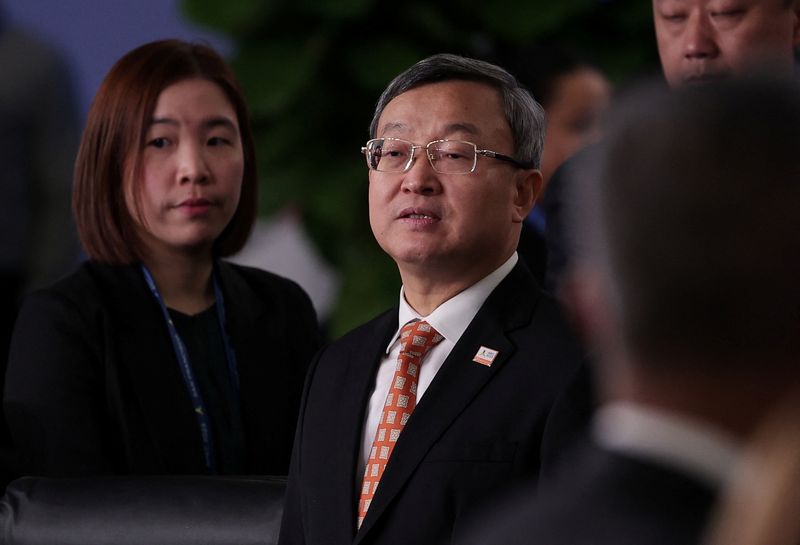
BEIJING (Reuters) -China appointed as its new trade negotiator on Wednesday a former representative to the World Trade Organization who replaces Vice Commerce Minister Wang Shouwen, amid an escalating tariff war with the United States.
Li Chenggang, 58, a former assistant commerce minister during the first administration of U.S. President Donald Trump, takes over from Wang, 59, the human resources and social security ministry said in a statement.
The change comes as Beijing pursues a hardline stance in an intensifying trade war with Washington triggered by Trump’s hefty tariffs on items imported from China.
Li, who has held several key jobs in the commerce ministry, such as in departments overseeing treaties and law and fair trade, has an academic background in the elite Peking University and Germany’s Hamburg University.
He replaces Wang, a veteran commerce official and top trade negotiator since 2022.
In the leadup to the U.S. tariff escalation, Wang welcomed foreign executives in Beijing, some from PepsiCo (NASDAQ:PEP), Visa (NYSE:V), P&G, Rio Tinto (NYSE:RIO) and Vale, reassuring them of China’s economic prospects.
The step came after official data showed foreign direct investment plummeted 27.1% in local currency terms in 2024 on the year, for its largest such drop since the 2008 global financial crisis.

Most Asian stocks retreated on Wednesday as persistent uncertainty over U.S. trade tariffs left investors wary of risk-driven markets, while technology shares were rattled by a warning from AI major Nvidia.
Hong Kong-listed Chinese internet stocks were the worst performers in the region, as more U.S. controls on chip exports to China raised questions over their artificial intelligence prospects.
Investors largely looked past stronger-than-expected gross domestic product data for the first quarter. GDP data for the coming quarters is expected to reflect the impact of a bitter trade war with the United States.
Broader regional markets took a weak lead-in from Wall Street, which closed slightly lower on Tuesday as trade and economic uncertainty remained in play. U.S. stock index futures slid in Asian trade, with NQM25 dropping 1.4% after Nvidia’s warning.
Asia tech pressured by Nvidia warning; Hong Kong slides
Tech-heavy Asian indexes, especially those with exposure to chipmaking, retreated on Wednesday after market major NVIDIA Corporation (NASDAQ:NVDA) flagged a $5.5 billion charge on its first-quarter earnings from new U.S. controls on AI chip exports to China.
Japan’s Nikkei 225 shed 0.7%, South Korea’s KOSPI lost 0.7%, while Taiwan’s Taiwan Weighted index slid 1.7%.
Nvidia suppliers TSMC (TW:2330), SK Hynix Inc (KS:000660), and Advantest Corp. (TYO:6857), slid between 2.7% and 5.4%, while broader chipmaking and tech stocks also retreated.
China’s internet giants were the worst-hit by this trend, given that the new U.S. controls stand to largely cut off local players from access to Nvidia’s AI chips. Nvidia said the export controls were tied to its H20 chip, which it had developed specifically for Chinese markets.
Baidu (HK:9888), Alibaba (HK:9988), and Tencent Holdings Ltd (HK:0700)- which are major buyers of the H20- sank between 2% and 5%, dragging Hong Kong’s Hang Seng index down 2.2%.
Losses in tech largely offset positive Chinese GDP data.
Chinese stocks fall past positive Q1 GDP as trade war impact looms
China’s Shanghai Shenzhen CSI 300 and Shanghai Composite indexes lost about 0.6% each, falling mostly in line with their Asian peers.
GDP data showed China’s economy grew 5.4% year-on-year in Q1, more than expectations of 5.2%. Quarter-on-quarter GDP growth was at 1.2%, slightly missing expectations of 1.4%.
The strong GDP print came following a slew of aggressive measures from Beijing through late-2024, as the government moved to shore up local economic growth.
But the GDP print belied potential headwinds for China from a bitter trade war with the U.S., which is likely to weigh on growth in the coming quarters. U.S. President Donald Trump imposed a cumulative 145% tariff on China, drawing retaliatory levies of 125% from Beijing.
The increased trade tariffs are expected to pressure China’s exports and potentially dent growth. But Beijing is also expected to ramp up its stimulus measures to offset trade-related headwinds.
Broader Asian stocks- at least those with limited tech exposure- were positive. Australia’s ASX 200 rose 0.2%, benefiting from plays into cyclical stocks, particularly banks. Singapore’s Straits Times index also added 0.3% on strength in major lending stocks.
Futures for India’s Nifty 50 index pointed to a flat open, although the Nifty rallied about 2% on Tuesday after Indian consumer inflation read softer-than-expected for March.

(Reuters) - Rio Tinto (NYSE:RIO) on Wednesday reported its weakest first-quarter iron ore shipments since 2019 and warned that more weather disruptions could lead to a 2025 forecast miss, after cyclones impacted the miner’s Pilbara operations.
The company now expects Pilbara iron ore shipments for 2025 to hit the lower end of its 323 Mt-338 Mt forecast range.
A series of tropical cyclones in the first quarter snarled activities at the Dampier port in the Pilbara region, with the company previously warning of total losses of 13 million metric tons of iron ore due to bad weather.
"Pilbara iron ore guidance remains subject to the timing of approvals for planned mining areas and heritage clearances. The system has limited ability to mitigate further losses from weather if incurred," the company said in a statement.
The miner has been struggling to consistently ramp up production while shipping more lower-grade ore as it prepares to bring its next generation of iron ore mines online.
It risks losing its position as the world’s top iron ore producer if Brazil’s Vale SA (NYSE:VALE), which reported on Tuesday, achieves the upper end of its 325 Mt - 335 Mt guidance for 2025.
Rio Tinto’s 2025 guidance of 323 Mt-338 Mt excludes an expected 9.7 Mt-11.4 Mt from its Canadian operations.
Meanwhile, copper production on a consolidated basis rose 16% to 210 thousand tonnes compared with a year ago, but fell 8% quarter-on-quarter.
At its Kennecott operation in Utah, copper production plunged 32% from the previous quarter due to unplanned conveyor failures, though it increased 7% year-on-year. The affected conveyor has since been restored to full functionality, the company said.
The world’s largest iron ore producer shipped 70.7 Mt of the steel-making commodity from its Pilbara operations in the three months ended March 31, down from 78 Mt in the same period last year.
That missed a Visible Alpha consensus estimate of 73.6 Mt.
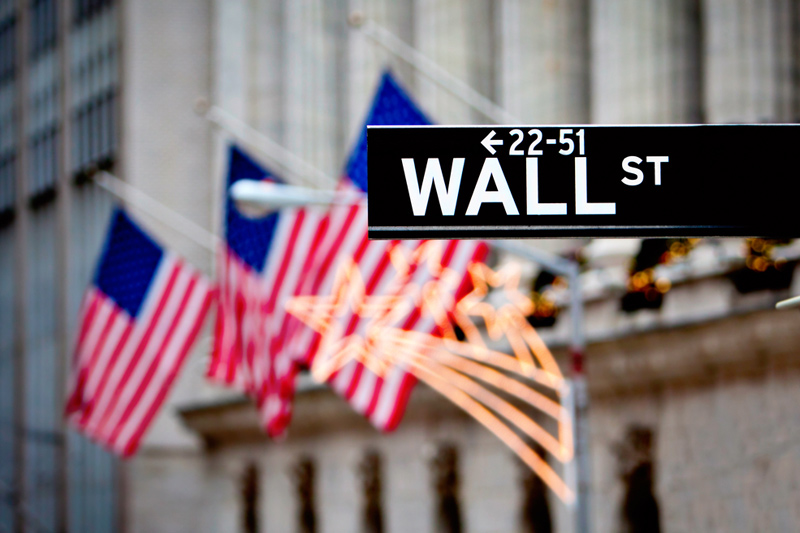
The S&P 500 closed lower after giving up gains Tuesday weighed own by health care and consumer stocks as tariff-driven uncertainty continued to weighed on sentiment.
At 4:00 p.m. ET (21:00 GMT), the Dow Jones Industrial Average fell 156 points, or 0.4%, the S&P 500 index fell 0.2%, and the NASDAQ Composite fell 0.1%.
Health care stocks under pressure as Trump signals tariffs ahead
The Trump administration has said it is kicking off investigations into imports of pharmaceuticals and semiconductors products, as it gauges whether to impose tariffs on these sectors.
Health care stocks including Moderna Inc (BMV:MRNA) (NASDAQ:MRNA), Zimmer Biomet Holdings Inc (NYSE:ZBH), and Molina Healthcare Inc (NYSE:MOH) were among the biggest decliners on the day.
“The president of the United States has started a hurricane whose consequences will not end any time soon,” French Prime Minister Francois Bayrou said at a news conference in Paris. He said Trump’s decision to impose sweeping tariffs and confront longstanding allies has “shattered trust around the world” and intensified economic volatility.
The ongoing tariff uncertainty also hurt retail stocks as consumers spending is expected to take hit from higher price pressures.
Banks shine in Q1
The first-quarter earnings has started to pick up steam this week, with the results from a number of major banks pointed to resilience in corporate earnings despite growing economic headwinds.
Bank of America (NYSE:BAC) stock rose more than 3% after the lender reported a rise in net interest income in the first quarter, as tariff-driven volatility spurring on record equities trading revenue at its global markets unit.
Citigroup (NYSE:C) stock also gained more than 1% after the banking giant reported higher-than-anticipated first-quarter results, as it followed a trend set by other Wall Street lenders in logging a sharp, volatility-driven uptick in equities trading revenue.
Elsewhere, Johnson & Johnson (NYSE:JNJ) stock fell 0.5% after the drugmaker reported first-quarter revenue and profit above expectations, driven again by strong sales of its cancer treatments, but revised its full-year forecast, cutting the earnings outlook.
In tech, Netflix (NASDAQ:NFLX) jumped more than 4% after the Wall Street Journal reported that the streaming giant is aiming to hit $1tn market cap and double its revenue by 2030.
Elsewhere, several Federal Reserve officials are also set to speak this week, most notably Chair Jerome Powell on Wednesday.
The focus is squarely on the central bank’s plans for interest rates amid heightened uncertainty over Trump’s tariffs and a potential U.S. recession.
In other news, OpenAI is considering building a social media network to rival other platforms such as X.
(Peter Nurse, Ambar Warrick contributed to this article.)

U.S. stock futures point higher, with markets focused on the trajectory of President Donald Trump’s tariff policy. The White House steps up probes into pharmaceutical and semiconductor imports, in a sign that the Trump administration could be eyeing tariffs on the sectors. Bank of America and Citigroup (NYSE:C) are due to be the latest lenders to report their quarterly earnings, while LVMH’s revenue disappoints expectations.
1. Futures tick up
U.S. stock futures edged higher on Tuesday, as investors assessed Trump’s tariff plans and awaited a raft of corporate earnings.
By 03:41 ET (07:41 GMT), the Dow futures contract had risen by 79 points, or 0.2%, S&P 500 futures had added 15 points, or 0.3%, and Nasdaq 100 futures had ticked up by 73 points, or 0.4%.
The main averages on Wall Street rose in the prior session, underpinned by the White House’s pause on reciprocal levies on a slew of tech-related products and comments from Trump that he was also considering some tariff relief for the auto industry.
Sentiment was bolstered by a Federal Reserve Bank of New York survey showing that medium- and long-term expectations for price increases were flat-to-down -- although near-term estimates rose.
Meanwhile, Fed Christopher Waller argued that the inflationary impact of the duties may be transitory as well. Still, he flagged caution around the growth outlook due to the trade taxes, saying they amount to “one of the biggest shocks to affect the U.S. economy in many decades.”
U.S. Treasuries gained, with yields -- which tend to move inversely to prices -- declining by between 7-15 basis points across the curve. A steep sell-off last week in the U.S. bond market, a key component of the plumbing of the global financial system, appeared to be one motive behind Trump’s decision to temporarily halt most of his elevated tariffs on most countries for 90 days.

Oil prices inched higher in Asian trading on Tuesday, helped by President Donald Trump’s potential pause on auto tariffs and a rebound in China’s crude imports, while markets eyed U.S.-Iran nuclear talks for clues on the demand outlook.
As of 22:05 ET (02:05 GMT), Brent Oil Futures expiring in June rose 0.2% to $65.02 per barrel, while West Texas Intermediate WTI crude futures gained 0.3% to $61.25 per barrel.
Both contracts settled little changed on Monday and remained close to four-year lows hit last week.
“The market is digesting fast-moving policy developments on the tariff front, while balancing them with nuclear talks between the US and Iran. Clearly, the market is more focused on tariffs and what they mean for oil demand,” ING analysts said in a note.
Trump indicates potential pause on auto tariffs
President Trump on Monday indicated potential exemptions from the 25% tariffs on foreign vehicle imports, particularly from countries like Mexico and Canada.
Before this, the administration announced exclusions for certain electronics, including smartphones and laptops, primarily from China.
These developments have eased some market concerns over escalating trade tensions.
However, investors were still cautious as Trump’s administration was moving forward with plans to potentially impose tariffs on semiconductor and pharmaceutical imports. The investigation into these tariffs was announced Monday through notices posted to the Federal Register by the Commerce Department.
China crude imports jump in March; US-Iran talks in focus
In China, March crude oil imports saw a sharp rebound, driven by increased purchases of Iranian and Russian oil ahead of anticipated U.S. sanctions.
While China’s key commodity imports were weak in the first quarter of 2025, the March uptick provided some optimism.
Meanwhile, indirect talks between the U.S. and Iran commenced on April 12 in Muscat, Oman, aiming to reach a nuclear peace agreement.
The outcome of these talks could influence the trajectory of U.S. sanctions on Iranian oil exports.
OPEC lowers global oil demand growth forecasts over US tariffs
The Organization of the Petroleum Exporting Countries (OPEC) on Monday revised its global oil demand growth forecast for 2025, reducing it by 150,000 barrels per day (bpd) to 1.30 million bpd.
This adjustment reflected weaker-than-expected first-quarter data and the impact of new U.S. trade tariffs.
In its monthly report, OPEC also lowered its projections for global economic growth for both 2025 and 2026.
The International Energy Agency is set to release its monthly oil report later today, which will reveal whether it has lowered demand estimates in response to the recent escalation in tariffs.
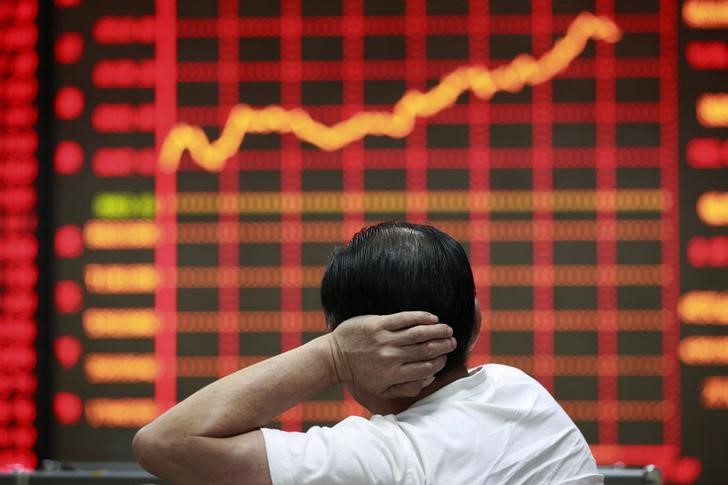
Most Asian stocks rose on Tuesday amid persistent hopes that U.S. President Donald Trump will grant more exemptions from his trade tariff plans, although gains were capped by uncertainty over more levies and a brewing trade war.
Chinese stocks were outliers, flitting between gains and losses in morning trade as Beijing became embroiled in a dire trade dispute with the United States. While local stocks took some relief from exemptions in Trump’s tariffs, this was limited by the president signaling that any exemptions will be temporary.
Asian markets took a positive lead-in from Wall Street, which clocked two straight days of gains on optimism over potential tariff exemptions. A swathe of positive bank earnings also aided Wall Street.
But gains on Wall Street were also capped by caution over trade and the economy. U.S. stock futures fell slightly in Asian trade, with S&P 500 Futures down 0.1%.
Investors were also on edge over any big swings in markets, especially with trading volumes expected to be low this week, ahead of the Good Friday holiday.
Asia stocks underpinned by tech, autos, on tariff hopes
Japan’s Nikkei 225, South Korea’s KOSPI, and Singapore’s Straits Times index were among the best performers in Asia, rising between 0.9% and 1.3%. All three were boosted by gains in technology stocks, while in the case of the Nikkei and KOSPI, automobile stocks too.
The Taiwan Weighted index also added about 1%.
Tech stocks clocked extended gains after the White House signaled that Trump’s 145% reciprocal tariffs on China will exclude electronics- a trend that heralds fewer near-term disruptions in the industry.
But Trump pushed back against this, stating that the exclusion was temporary, and that he will unveil separate tariffs on electronics soon. Media reports showed that his administration was already probing electronics imports.
Still, Trump on Monday suggested that he could also scale back some of his 25% tariffs on automobiles to lessen their economic impact, with his comments sparking a rally in auto stocks with large U.S. exposure.
Japan’s Honda (NYSE:HMC) Motor (TYO:7267) and Toyota Motor Corp (TYO:7203) surged nearly 5% each, while South Korea’s Hyundai (OTC:HYMTF) added 3.7%.
Broader Asian markets also advanced on hopes of more U.S. tariff forgiveness. Australia’s ASX 200 rose 0.5% after the minutes of the Reserve Bank’s late-March meeting showed policymakers unclear over when they will cut interest rates next.
Fast-food franchise operator Collins Foods Ltd (ASX:CKF) was an outlier in Australia, sinking more than 4% after it flagged an impairment in its Netherland operations.
Japan’s broader TOPIX index added 1%, while futures for India’s Nifty 50 index pointed to a flat open after a strong rally in local markets last week. Indian inflation data for March is due later on Tuesday.
Chinese stocks whipsaw amid trade jitters; GDP awaited
China’s Shanghai Shenzhen CSI 300 and Shanghai Composite indexes traded down about 0.3%, while Hong Kong’s Hang Seng index was flat after a positive start.
Uncertainty over the Chinese economy ramped up in the face of a bitter trade war with the U.S., especially as Beijing imposed 125% retaliatory tariffs on American goods.
Several analysts were seen trimming their growth forecasts for China due to headwinds from the trade war.
Focus is now on first-quarter Chinese gross domestic product data, which is due on Wednesday. The print is expected to show whether growth picked up amid a slew of aggressive stimulus measures from Beijing through late-2024.

